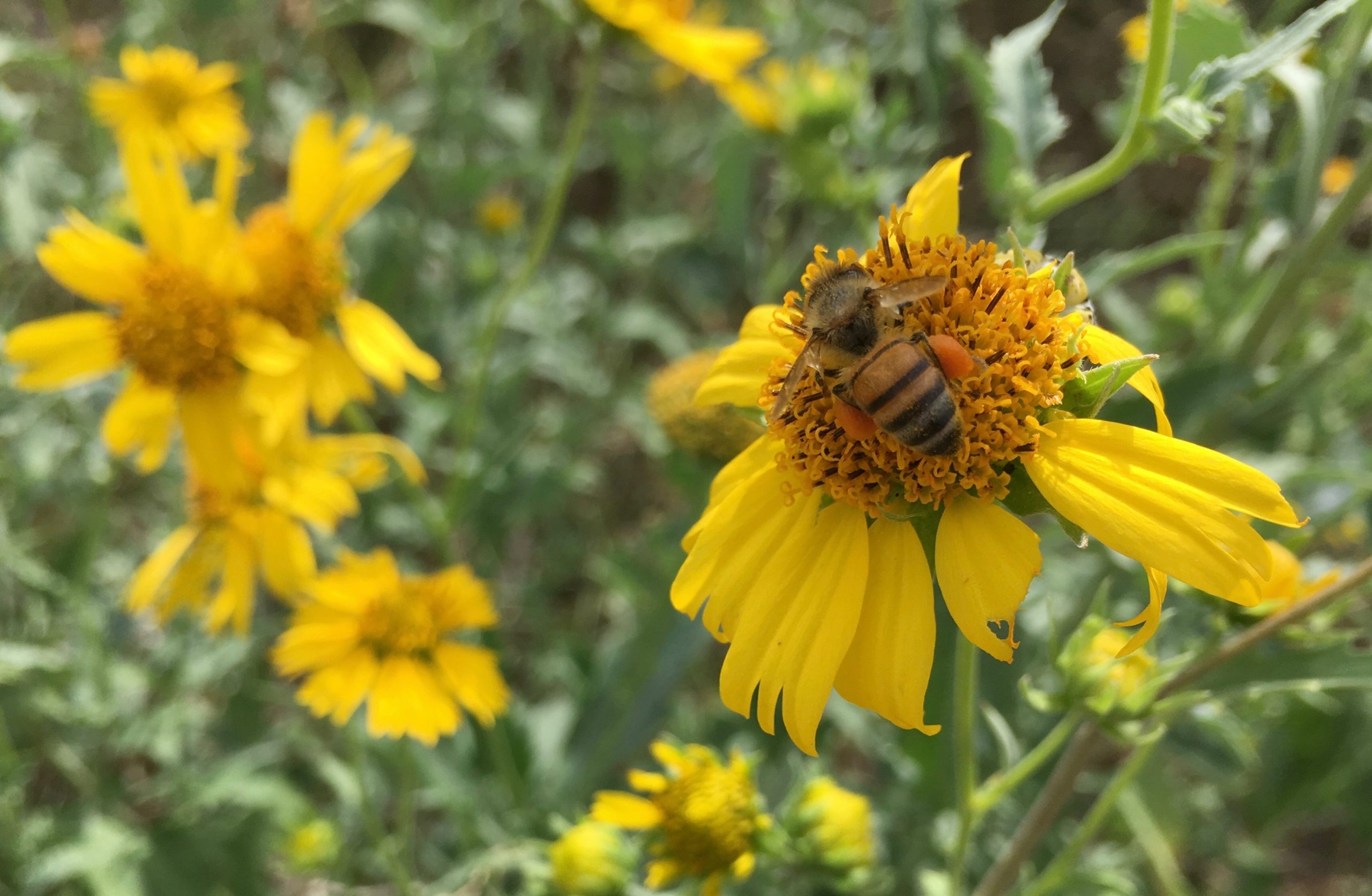Cowpen Daisy, Verbesina encelioides, goes on the Texas Butterfly Ranch Favorite Species List (FSL). We LOVE this rock star plant.
It starts blooming in March and continues through November. Keep deadheading, and Cowpen Daisy rewards you with prolific blooms, abundant seeds, and wildlife aplenty. Drought tolerant and comfortable in various soils, Cowpen gets its name from its capacity to easily sprout in disturbed areas–like the cowpen.
You can cut it back short or let it grow tall and gangly to create a flowering hedge. As an annual, the plant grows tall in the sun–up to five or so feet. In partial shade it will stay shorter and bloom less.
Cowpen Daisy is a great all-around pollinator plant, attracting a variety of bees and butterflies. It also plays host plant to the Bordered Patch butterfly, Chlosyne lacinia, a highly variable member of the Nymphalidae family. The black, white and orange butterflies lay groups of yellow eggs on the underside of the daisy leaves and other members of the aster family. When the eggs hatch, the caterpillars are gregarious and stick together, decimating small groups of leaves at a time. They morph through their stages quickly and form interesting tan-and-black mottled chrysalis.
In the fall, resist the temptation to slash Cowpen Daisy to the ground as its appearance becomes unkempt. Prolific seeds will fall to the ground or become fodder for birds. In the spring, you’ll have dozens of young plants. They’re easy to pull out, pot up to give away as young seedlings, or leave to compete with each other to provide more gardening fun.
Related Posts
-
Cowpen Daisy declared San Antonio’s Unofficial Pollinator Plant of the Year, 2019
-
How to Grow Cowpen Daisy from seed
-
Cowpen Daisy, a pollinator favorite, plays host to Bordered Patch butterfly
-
Ladybird Johnson Wildflower Center Plant Profile of Cowpen Daisy
-
USDA Native Plants of North America Cowpen Daisy page


Leave A Comment